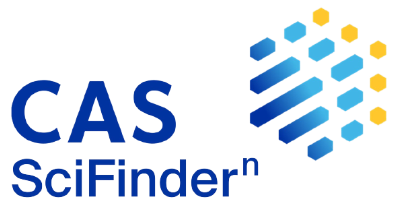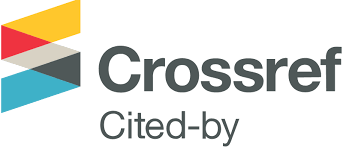Synthesis of new n,n’-disubstituted 5-spirocyclopenten-3-yl 2,4,6-trioxyhexahydropy-rimidines
DOI:
https://doi.org/10.24959/ophcj.13.770Keywords:
ring-closing methathesis (RCM), 5-spiro-2, 4, 6-trioxyhexahydropyrimidines, derivatives of tiolan-1, 1- dioxide, ruthenium сarbene catalystsAbstract
The synthesis of new N, N`-disubtituted 5-spiro-2,4,6-trihydropyrimidinetriones by ring-closing metathesis reactions has been presented in this work. Starting compounds for obtaining of spirocycles (5,5-diallyl-1,1-dioxythiolanyl-2,4,6-trihydropyrimidinetriones) have been synthesized by two pathways, one of them is condensation of carbamides with malonic acid in the presence of dehydrating agents, whereas the other path consists in the condensation of dicyanodiamide with diallylcyanoacetic ester in the presence of sodium alkoxide, and the resulting products are subjected to alkylation with the following acid hydrolysis. It has been found that imidazolidine containing the isopropoxybenzylidene ruthenium complex is the most suitable for carrying out of ring-closing metathesis reactions since it has the high thermal stability; it allows to obtain the target products with a high yield due to carrying out these reactions at the higher temperatures. The preliminary computer prognosis of the biological activity of new 1,1-dioxythiolan derivatives with the help of PASS (Prediction of Activity Spectra for Substances) programme has shown that some of these compounds can be ATPase proteasome inhibitors. Moreover, new spirocyclopenten containing derivatives may be promissing as precursors for obtaining of biologically active substances.
Downloads
References
- Brown D.J., Jones R.L., Angyal A.M., Gtigg G.W. // J. Chem. Soc., Perkin 1. – 1972. – P. 1819-1825.
- Mashkovskii M.D. Lekarstvennye sredstva (Drugs). 15th ed. – Moscow: Novaya Volna, 2006. – P. 389.
- Maquoi E., Sounni N.E., Devy L. et al. // Clin. Cancer Res. – 2004. – Vol. 10. – P. 4038.
- Coast S.J., Dyatkin A.B., He W. et al. // Chem. Abstr. – 2006. – Vol. 145. – №397 552 k.
- Cope C., Kovacic P., Burg M. // J. Am. Chem. Soc. – 1949. – Vol. 71 (11). – P. 3658-3662.
- Дайсон Г., Мей П. Химия синтетических лекарственных веществ. – М.: Мир, 1964. – С. 629.
- Kotha S., Deb A.C., Kumar R.V. // Bioorg. Med. Chem. Lett. – 2005. – Vol. 15. – P. 1039-1043.
- Kotha S., Deb A.C. // Ind. J. Chem. – 2008. – Vol. 47 B. – P. 1120-1134.
- Miyazaki M., Handa Y., Suzuki Y., Sato J. // Res. Exp. Med. – 1987. – Vol. 187 (2). – P. 105-117.
- Pat. US 3134779 (1964) // https://www.google.ru/patents.
- Shults E.E., Andreev G.N., Shakirov M.M. // Rus. J. Org. Chem. – 2009. – Vol. 45, №1. – P. 87-101.
- Поройков В.В., Филимонов Д.А. // Рос. хим. журн. – 2006. – №2. – С. 66-75.
- Пархоменко П.И., Дульнев П.Г., Безменова Т.Э. // Укр. хим. журн. – 1975. – Т. 41, вып. 1. – С. 67-68.
- Пархоменко П.І., Безменова Т.Е. // Доп. АН. УРСР. Сер. Б. – 1970. – №5. – С. 429-431.
- Головатюк В.М., Безуглий Ю.В., Кашковський В.І. // Науково-теорет. журн. – 2011. – №12. – С. 118-124.
Downloads
Published
How to Cite
Issue
Section
License
Copyright (c) 2013 National University of Pharmacy

This work is licensed under a Creative Commons Attribution 4.0 International License.
Authors publishing their works in the Journal of Organic and Pharmaceutical Chemistry agree with the following terms:
1. Authors retain copyright and grant the journal the right of the first publication of the work under Creative Commons Attribution License allowing everyone to distribute and re-use the published material if proper citation of the original publication is given.
2. Authors are able to enter into separate, additional contractual arrangements for the non-exclusive distribution of the journal’s published version of the work (e.g., post it to an institutional repository or publish it in a book) providing proper citation of the original publication.
3. Authors are permitted and encouraged to post their work online (e.g. in institutional repositories or on authors’ personal websites) prior to and during the submission process, as it can lead to productive exchanges, as well as earlier and greater citation of published work (see The Effect of Open Access).














